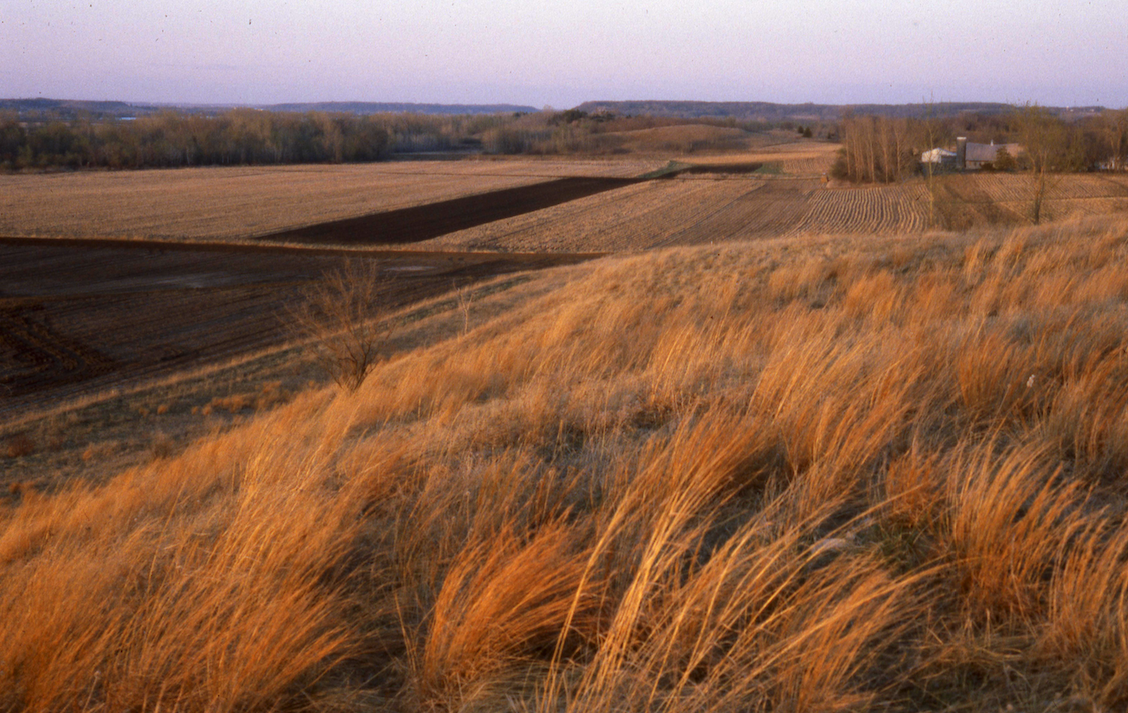
Rising out of the landscape like tiny islands in a vast sea of corn and soybeans, the hills of McKnight Prairie provide a refuge for rare native prairie plants. This 33-acre plot of land located eight miles east of campus was purchased by Carleton in 1968 for conservation purposes. McKnight, along with the tiny, aptly-named Postage Stamp Prairie in the upper Arb, make up Carleton’s only examples of remnant prairie ecosystems. Despite the natural look, almost all of the prairies in the Arboretum have been restored from agriculture in the last 50 years.
18 million acres of prairie once stretched across the Minnesota landscape. Today, less than 2 percent of that remains. Prairie plants had harbored and developed very fertile soils over generations; most of the land is now used for agriculture. McKnight, like many other surviving prairie remnants, has remained unplowed thanks to its hilly topography. Additionally, the rounded hills of McKnight are part of the St. Peter sandstone, which is an exceptionally uniform and pristine sandstone that erodes easily and leads to sandier topsoil. The soils and topography of the hills have remained intact because of the deep (~10+ feet) network of roots from the prairie plants. Most of the Arb, on the other hand, is underlaid by the older and harder Prairie du Chien group of dolomitic (carbonate) bedrock, which forms the bluffs covered by prairie restorations.
In order to protect McKnight Prairie for generations to come, Carleton sold a conservation easement to the Minnesota Department of Natural Resources (DNR) in 2010. A conservation easement is a legal agreement between a landowner and a conservation entity where the landowner receives monetary compensation in exchange for placing land use restrictions (for example, prohibiting building, developing, or plowing) on the property. Conservation easements can be created for multiple purposes and provide permanent protection to important habitats while helping to incentivize conservation practices.
The story of the land can only truly be told by its native remnants. Maintaining and preserving the hills of McKnight allows the story of the backbone of this landscape to continue to be told.











